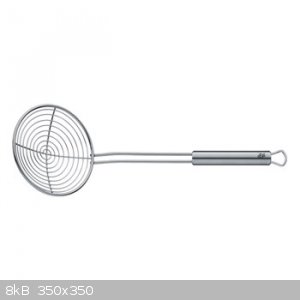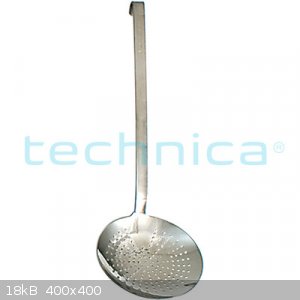
metalresearcher - 30-8-2017 at 01:41
I found this thunderf00t video showing transparent Na metal. Or is it NaOH ? To my opinion it is NaOH.
https://www.youtube.com/watch?v=BIGMfai_ICg
j_sum1 - 30-8-2017 at 02:25
There are already a couple of threads on this. No clear consensus on what is happening. But it is safe to say that the transparent bead is not
metallic sodium.
I did some experimenting myself. It is really interesting and I have not figured everything out. I recommend having a go for yourself.
Thunderf00t includes some K as well as Na. It does much the same thing but there are differences. I could get nothing analogous with Li.
Gearhead_Shem_Tov - 30-8-2017 at 03:05
Just by virtue of being a true metal it is extremely unlikely that bulk Sodium would ever be transparent in the visible light wavelengths. Metals
share their electrons promiscuously in a cloud, and that almost guarantees photons get scattered very efficiently.
Thin films, that's a different story.
clearly_not_atara - 30-8-2017 at 14:32
It's possible that sodium metal reacts with formed hydrogen to sodium hydride which could be transparent, particularly if mixed with NaOH, but still
flammable.
nezza - 31-8-2017 at 01:13
My take on this is that the darkening "metal" is sodium with an increasing amount of oxide/hydroxide dissolved in it and once all of the sodium is
used up you have a transparent ball of liquid sodium hydroxide which after a few seconds reacts with the water to explode or jump about on the
surface. You note that there is no flame or gas evolution when the transparent ball explodes.
MeshPL - 2-9-2017 at 11:03
Why nobody ever has tried to catch the bead? It's not like it is going to split the universe in half if you try to use some kind of tweezers on it, or
poke it with a stick, stick a syringe needle in it, catch it on some kind of spoon or better on the kitchen device (colander spoon? slotted spoon?)
shown in the photos. Just not do it bare handed.
I will probably try once the school year starts.
[Edited on 2-9-2017 by MeshPL]


Melgar - 6-9-2017 at 04:50
He claims in the video that it would sink if it were sodium hydroxide, and thus denser than water, but it's obviously very hot and evolving enough gas
that it can float on the surface like a hovercraft. Or, like the Leidenfrost effect, but with the surface types reversed. There isn't enough time
for it to sink, anyway. So it could very well be molten sodium hydroxide.
CRUSTY - 7-9-2017 at 10:13
In the previous major thread on sodium hydroxide, j_sum sort of capped off the topic by finding this RSC article:
https://www.chemistryworld.com/news/tamed-sodium-in-water-co...
The article states that the transparent material is molten sodium hydroxide, suspended by the Liedenfrost effect under its own heat (heat of solvation
may play a role too?), which is clearly the case due to its quick acceleration on the surface of the water.
Personally, I find the fact that the preceding blue color of the droplet is due to the transient presence of solvated electrons far more
interesting, but to each his own.
LearnedAmateur - 20-9-2017 at 06:46
If I happen to spill small (1-2mm) sodium hydroxide pellets, after a few minutes they absorb enough atmospheric moisture to form transparent droplets.
I suspect a similar phenomenon is occurring here, alongside the fact that different aqueous solutions can form distinct boundaries if combined
correctly (even just a significant temperature difference will exhibit this), hence why the NaOH doesn't mix with the water.
Melgar - I doubt the reaction would be sufficiently hot as to generate molten NaOH (m.p = 318C); maybe if the reaction was scaled up to at least a few
grams and a much closer proportion of water to sodium, but of course the resulting explosion would scatter the mixture and you'd only find solid or
aqueous NaOH.
j_sum1 - 20-9-2017 at 13:52
Why do you doubt that it gets above 318C?
It glows red hot first beforehand. It is surrounded by a burning metal flame before that.
My experiments were at 0.05g scale. It certainly is an interesting exercise and there are lots of curious observations to figure out. But it certainly
gets hot enough to melt NaOH. That is one of the easier things to determine.
LearnedAmateur - 21-9-2017 at 05:21
It certainly might and it's likely that I'm wrong, but I assumed that the water would carry away a lot of the energy, physically preventing such small
quantities from reaching that temperature. I've played around with ~5mm cubic chunks in water and they usually just fizzle and fly along the surface,
the odd spark here and there. When I get the chance I'll try to determine the sort of energy release and the temperature of the sodium, since my
current views are quite speculative.
j_sum1 - 21-9-2017 at 05:37
Well, if you are experimenting, do try putting a piece of filter paper over the top of an overfull beaker so that a shallow puddle is formed. Then
drop your piece of sodium and figure it out for yourself.
As others have said, the transparent bead is only one of the interesting observations -- and probably the easiest to explain. The deep blue that
looks like solvated electrons, the role of the paper (some contact seems to be necessary with Na but not K), and the manner in which the reaction
proceeds (Why does the transparent bead form?) -- these are bigger questions with more elusive answers.
